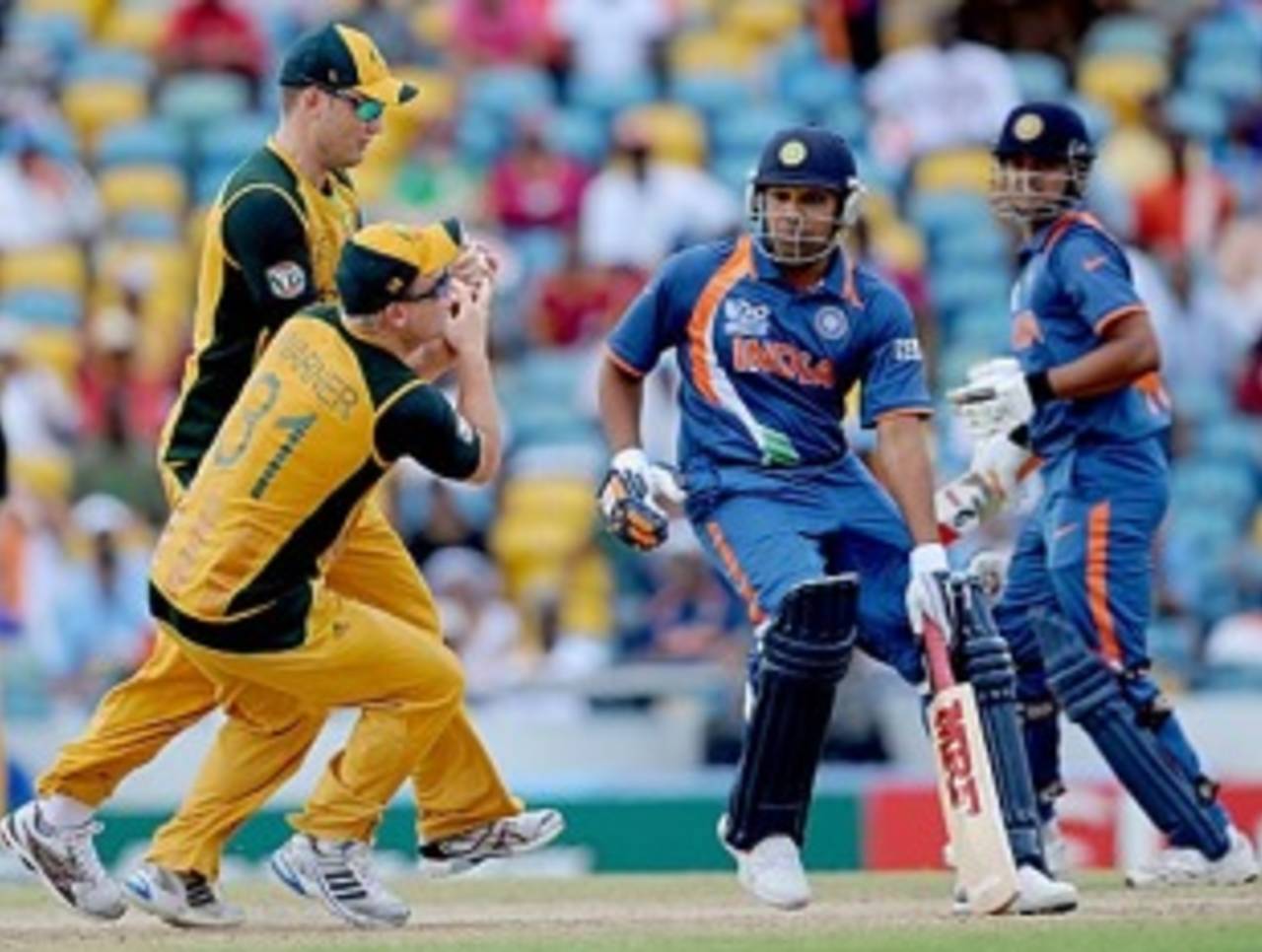So Cricket Australia has
just aimed another blow at the ageing provider of world cricket. The future of one-day international cricket has been debated for a while now, but with Cricket South Africa and the England Cricket Board making their positions clear as well, and going in for 40-over competitions, the once blue chip no longer seems a good stock to possess. And yet you cannot cremate someone unless you are absolutely sure he is dead, and I am not entirely convinced the good old ODI is gone.
India played Australia in October last year to full houses and resounding television ratings. England played Australia seven times shortly before that and audiences didn't seem to mind that either. Wedged between those were a Champions Trophy in South Africa (50 overs) and a Champions League in India (20 overs) that produced excellent cricket but got a thumbs down from spectators and viewers. That would seem to queer the pitch a bit; some high-profile tournaments work and others don't, so what do you do?
Those two months actually provided enough evidence that it is not the format but the contestants that people are worried about now. I asked a leading executive at Group M, who buy more media space - and therefore know audience preferences better - than anyone else, and he confirmed that in India a match against Australia or Pakistan will always deliver, but more worrisome was his assessment that non-India games don't deliver at all. The IPL, for example, rates higher than the ICC World Twenty20. But he did say, too, that in neutral games the 20-over version out-rates the 50-over game.
It tells me that 50-over ODIs are still strong in some constituencies but are skating on thin ice elsewhere. In India, England, Australia and South Africa, which are the countries that matter from a financial perspective, you will get full houses when the home team plays any of the other three, and occasionally against Pakistan. The question is: is that good enough to sustain the format as a whole? The answer is yes if you could restrict ODIs to games between these countries but since that is not possible, a review of the format warrants itself. Indeed, I fear that, as with the Champions Trophy, we will see lots of empty seats at the World Cup as well.
One idea is to play two innings but in the second carry the game forward from where it was stopped at the end of the first. The toss will not be as big an advantage anymore, the conditions will apply to both sides, and players will still have to adapt and play long innings. Most interestingly, it will make captaincy more critical
But for at least a year the ODI will chug along, with some pretty stops on the way and some forgettable ones, which is a good enough time to look at the alternatives. Forty overs, as South Africa and England have gone with in their domestic competitions, is one possibility and is not too different from what happened to the World Cup in the mid-eighties, when it came down from 60 overs to 50. With 20 overs of Powerplay there will be enough action, still some opportunity to build an innings, still the need to see off a good bowler, but from a marketing perspective it is not too far removed from the 50-over game to rid it of its current problems.
Splitting the game into what is effectively two 20- or 25-over games is like the existing Twenty20 format with the added variable of a deficit that one side will have to make good. It sounds exciting - the best batsmen will bat twice in an afternoon, and so you can have a double cheeseburger instead of an ordinary one. The question is, do you want to when you have Twenty20 internationals already? And as Ian Chappell asked forcefully recently (on Cricinfo's
Time Out programme): is it a gimmick or is it something that will last a while? If you want to test different aspects of a player's skill, then it contributes nothing. It is like a one-hour movie extended to two hours.
The other idea that has some merit is to play two innings but in the second carry the game forward from where it was stopped at the end of the first. It addresses the issues before ODIs better. The toss will not be as big an advantage anymore, the conditions will apply to both sides, and players will still have to adapt and play long innings. Most interestingly, it will make captaincy more critical. It could still lead to one-sided games as now, it could mean mostly tailenders bat in the second half most times, and it will make a rain-affected game very difficult to award, especially if it rains in the third innings.
Neither of these, though, will solve the problem of the one-sided game or the one that suffers because the home side isn't involved. It requires thought and, most important, it requires trialling, but the last of the options seems to be the best alternative; if indeed you need one.
Harsha Bhogle is a commentator, television presenter and writer
